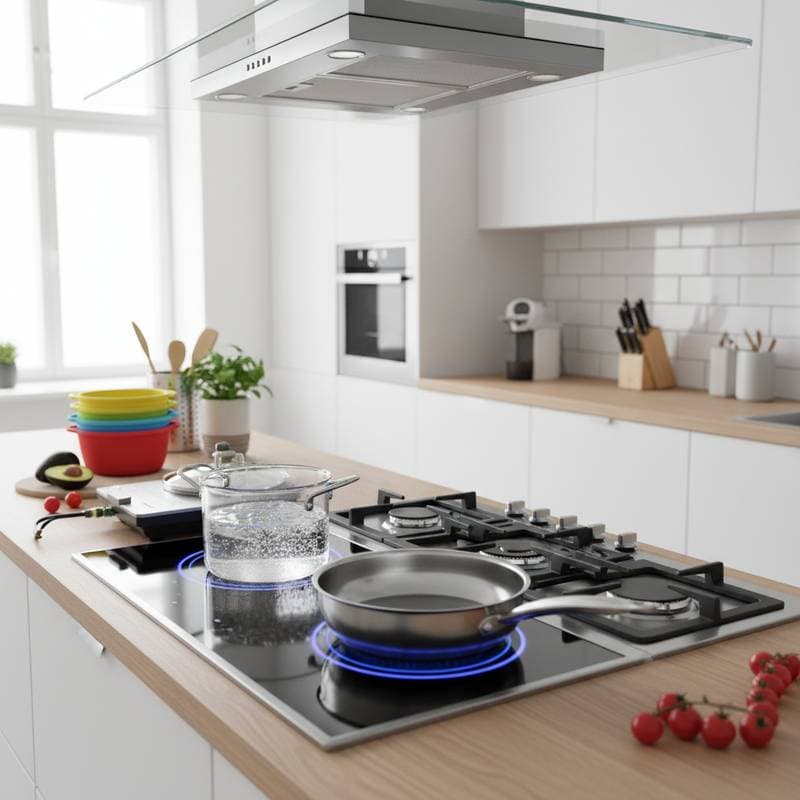Cabinet Refacing: Transform Your Kitchen Without Demo
If your kitchen feels outdated but the idea of tearing it apart makes you nervous, cabinet refacing may be the solution you are looking for. As a contractor who has remodeled countless kitchens, I can tell you that refacing is one of the most efficient ways to refresh the heart of your home without the stress, cost, and mess of full demolition. Done right, it can give you the look of a brand-new kitchen at a fraction of the price.
What most homeowners do not realize is that cabinet refacing is not just a cosmetic shortcut. It is a legitimate construction method with professional standards, specific materials, and installation techniques. When handled properly, it can extend the life of your cabinets, improve functionality, and modernize the appearance of your entire kitchen.
Before you dive into this project, it is worth understanding the risks of doing it incorrectly, the financial and environmental benefits, and the practical steps involved.
The Real Cost of Cabinet Refacing vs. Replacement
From a financial standpoint, refacing usually costs about one-third to one-half the price of brand-new custom cabinets. On top of that, you save money by not replacing countertops, backsplashes, or flooring that might otherwise get damaged during demolition.
To give you a real-world example, I recently worked with a client who had quoted a full kitchen replacement at over $28,000. By choosing refacing instead, they spent less than $11,000 and still got a high-end look with solid wood doors and modern hardware. They kept their granite countertops intact and avoided weeks of disruption.
Keep in mind that these savings are not just upfront. Quality refacing can add 10 to 15 years of life to your cabinets, protecting your investment long term.
Materials Used in Cabinet Refacing
Homeowners often underestimate the variety of material options available. Professional refacing is not just about slapping a thin veneer over old wood. There are multiple choices that influence both appearance and durability.
-
Wood Veneer
Thin sheets of real wood applied to the cabinet face. They can be stained or painted and provide a rich, authentic look. -
Laminate
Durable, easy to clean, and available in endless colors. A good choice for modern or high-traffic kitchens. -
Rigid Thermofoil (RTF)
A vinyl material bonded to MDF doors. It gives a smooth, uniform finish and is resistant to chipping. -
Solid Wood Doors
Even with veneers on the boxes, most professional refacing jobs include replacing the doors and drawer fronts entirely. This is what gives the cabinets a like-new appearance.
Common Mistakes to Avoid
I have seen too many homeowners try to cut corners and end up with disappointing results. Here are the biggest mistakes to watch for:
-
Skipping the prep work
If surfaces are not properly cleaned or sanded, veneers will peel over time. -
Using low-quality adhesive
Professional-grade adhesives are essential for long-lasting results. -
Not replacing hinges and hardware
Old hardware can make new cabinets feel cheap. Upgrading hardware is a small cost with big impact. -
Choosing the wrong contractor
Not every contractor has experience with refacing. Ask for photos of past projects and references before hiring. -
Overlooking structural issues
Refacing is not a fix for damaged or unstable cabinets. If the boxes are weak, you are wasting money.
Contractor vs. DIY: What You Need to Know
Some homeowners consider refacing as a DIY project. While it is possible, I usually advise against it unless you have advanced carpentry skills. Veneering requires precise cuts and flawless installation, and mistakes are obvious once the doors go on.
A professional contractor brings specialized tools, finishing techniques, and access to higher quality materials. More importantly, you get warranties on both the materials and labor, which protects you if something goes wrong.
That said, if you are handy and want to save money, you could handle the hardware installation or interior upgrades yourself while leaving the veneering and door installation to a pro.
Long-Term Value of Cabinet Refacing
When done correctly, refacing extends the life of your cabinets by a decade or more. It also improves resale value because buyers see an updated kitchen without knowing the cabinets were not replaced.
In my experience, homeowners who invest in quality refacing often recoup much of the cost when selling their home. Kitchens sell houses, and a refreshed look can make a huge difference in buyer perception.
Enjoying Your New Space
Cabinet refacing is one of the few remodeling projects that delivers immediate satisfaction without long delays or overwhelming costs. You get the look of a brand-new kitchen while keeping your existing layout intact.
If your cabinet boxes are sturdy and you are happy with your kitchen’s footprint, refacing is worth serious consideration. It protects your budget, reduces waste, and provides a fresh look that can last for many years.








